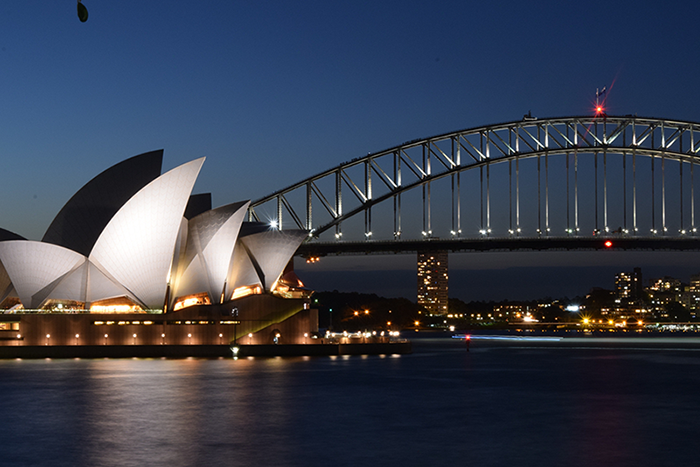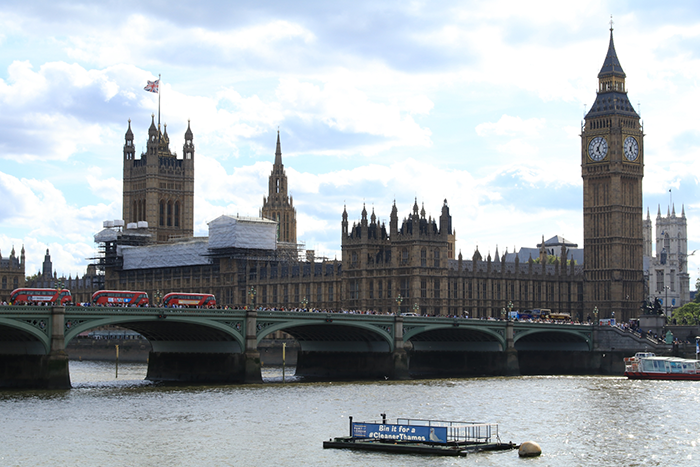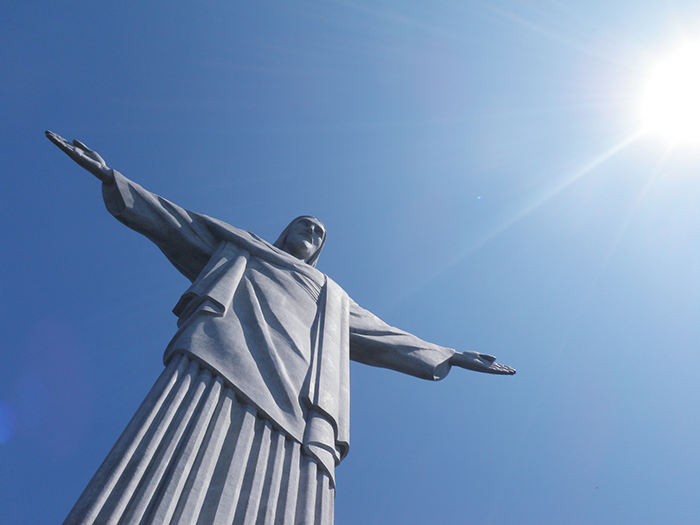According to John J. MacAloon, who is studying the Olympics based on the Theory of Spectacle, the modern Olympics is a unique performance that mixes “spectacle,” “festival,” “ritual,” and “game” elements (MacAloon, John J. 1988. Rite, Drama, Festival, Spectacle: Rehearsals Toward a Theory of Cultural Performance. Translated by Mitsunobu, Meiyo, et al. Heibonsha Publishing Co., Ltd.). Although the opening and closing ceremonies contain the first three of these elements, not much attention has been paid to them previously in studies of the Olympics.
The International Olympic Committee makes it a rule that at the opening ceremonies, an artistic program be implemented along with the opening declaration by the head of the host state, parade of athletes, Olympic Oath, lighting of the Olympic cauldron, and other rituals. The artistic program has become a grand event since the Los Angeles games in 1984. This transformation into a great show is linked to the commercialization of Olympics and seen as a strategy for TV stations to attract the interest of TV viewers and secure sponsors.
Many of the artistic programs were produced by world-famous producers as an extended, spectacular performance to bring excitement and grandeur to the opening ceremonies. The programs are considered by host countries as an opportunity to encourage their people to re-discover and share the national identity, as well as to convey the spirit of Olympism to the world, through the presentation of their proud story about their nation that reflects their cultural and historical identity. The purposes of the programs vary, such as boosting national prestige and promoting a shift of national identity to make it more adaptive to changes of the times. As the issue of coexistence of different races and cultures has become increasingly important domestically and internationally since the end of the Cold War, recent programs are focusing more on emphasizing respect for diversity and harmony. This trend matches the assertion of Pierre de Coubertin, advocate of the modern Olympic Games, that only true internationalism which honors diversity of people will lead to world peace.
I began to take an interest in the artistic programs when I watched the opening ceremony of the Olympic Games held in Sydney in Australia in 2000. Before Australia was colonized by the British in the 18th century, the continent was inhabited by the Aboriginal and Torres Strait Islander peoples, who comprise many tribes with different languages and customs. Australia has then become one of the most multicultural countries as many immigrants and refugees from various regions of the world have resettled in the country. There was a time when the immigration of people of non-European ethnic origin was restricted under the White Australia policy, but multiculturalism, which is based on respect for and embrace of diversity of the nation, has been promoted since the 1970s. I was staying in Australia to study multiculturalism until just before the Sydney Olympic Games.
The opening ceremony, which was produced and directed by Ric Birch, a world-renowned director, featured the highly visible Aboriginal participation as promised by the country in its bidding campaign to make the Olympic Games contribute to Indigenous communities. In the artistic program, while a white girl was taking a nap on a beach, she had a dream where she met an Aboriginal elder, both of whom then invited the audience into the story of the history of the Australian continent from ancient times to the present. The various performances by about 2,000 Indigenous peoples from all over the nation, including traditional religious rituals and energetic dances, were spectacular.
Then, immigrants and refugees came from the five continents, which was symbolized by five groups of performers, each dressed in the five Olympic colors and representing each of the continents, who appeared in the order of Africa, Asia, the Americas, Europe, and Oceania. There was even a scene where the five groups of people performed together with the Indigenous peoples, emphasizing multicultural coexistence in the country. In another scene that was particularly noteworthy in terms of the strength of a message, the white girl stood harmoniously together with the Aboriginal elder on a bridge that represented “reconciliation between the races.” The scene signified the achievement of “reconciliation” between the Aboriginal and White Australians after overcoming their unfortunate history.

This artistic program, which focused on the harmony and coexistence of people of diverse origins, was praised within and outside of Australia as a representation of the ideal of Olympics. Many Australians heralded the program as it successfully dispelled Australia’s bad image associated with the notorious White Australia policy and highlighted the country as a mature, multicultural nation to the world. On the other hand, there was also criticism that the program contributed to a cover-up of the reality. As a matter of fact, “reconciliation” between Black and White Australians is going through difficulties over the issue of the colonists’ and the state’s invasion of the land of and discriminatory acts against the Indigenous peoples in the past. Discrimination against them, in fact, still exists. The program, however, may be seen as having been significant as a future-oriented message aimed at presenting Australia’s future goal of becoming a multicultural nation based on collaboration with the Indigenous peoples for the purpose of promoting the achievement of “reconciliation” through overcoming all the difficulties.
When it comes to the celebration of multiculturalism, the London Olympic Games in 2012 was facing a rather difficult situation. During its bidding campaign, London particularly emphasized—as its slogan, “The World in One City,” indicates—its openness to different cultures as a cosmopolitan city with the dynamism of diversity where 50 ethnic groups live together and more than 300 different languages are spoken.
However, on July 7, 2005, coincidentally on the morning following the day when London won the bid to host the Olympic Games 2012, terrorist bombings occurred in London. The suspected terrorists were Muslims born and brought up in Britain, and the fear of terrorism led, shortsightedly, to an argument about the failure of Britain’s multiculturalism. The atmosphere shifted to that of being more cautious about multiculturalism.
What was, then, the opening ceremony of the London Olympic Games like? The ceremony, directed by film director Danny Boyle, presented the country’s history in a spectacular manner by borrowing motifs from The Tempest, a play written by the great British dramatist Shakespeare, children’s literature work Peter Pan, and others. Sophisticated staging techniques were utilized to trace the history of the country, which started with farming communities, underwent the Industrial Revolution and the World Wars, and developed into a proud welfare state before reaching the modern age where young people are making full use of information technology.
In the scene of the Industrial Revolution with huge stage sets, into which the director must have painstakingly put much effort, laborers working hard with sweat on their face filled the stadium ground. The scene may have been seen as a story of laborers, rather than a story about multiculturalism, at first glance, but the laborers were, when looked at more closely, actually comprising diverse races and ethnic groups. British Africans appeared even in scenes before the Industrial Revolution although this is historically not correct, while the father and mother of a family appearing in a scene of the modern age were British African and white, respectively (some conservative people criticized this, arguing that the family did not represent typical British families). Children from nearby schools who speak more than 50 different languages also took part in the opening ceremony as voluntary staff and drew much attention. The opening ceremony and the artistic program thus reflected the diversity of London in various scenes, although multiculturalism was not highlighted as a main theme.

The opening ceremony of Rio de Janeiro in 2016 presented in a bold manner how the multicultural nation had been built, including the country’s negative history. Brazil is a mixed-race nation formed through mixing of different races including indigenous peoples, the Portuguese who settled in Brazil in the 16th century during the Age of Exploration, and black people brought forcibly from Africa as slaves, as well as through immigration of people from Japan and other countries. This history of migration of different races was introduced at the beginning of the artistic program of the opening ceremony, which was directed by film director Fernando Meirelles.
The program first showed a performance by Brazilian natives living in the Amazon rain forests with butterflies, followed by a tense yet humorous encounter between the Brazilian natives and Portuguese who arrived by sailing ship. Then, African slaves brought as plantation laborers and immigrants who looked like merchants from Syria and Lebanon paraded. One thing that drew our attention was that, by showing the slaves walking in shackles to prevent them from escaping, the program presented even the country’s disgraceful history about slavery without disguise.
Who among Japanese viewers could have imagined the next scene? Japanese-Brazilian women wearing costumes with the Rising Sun design appeared and danced beautifully. This enchanting performance is said to have been planned to coincide with the time around the atomic bomb had been dropped on Hiroshima 71 years before, as an expression of wish for global peace. The population of Japanese-Brazilians is about 1.3 million, but because the majority of them live in São Paulo State, they are not a large community in Rio de Janeiro compared with other groups of immigrants. The performance was probably a thoughtful arrangement by director Meirelles for Japan, the host country of the next Olympic Games.

In addition to introducing the country’s history of immigrants, the artistic program was also conveying a universal message to the world. After a scene that portrays human beings as always engaging in confrontation and disputes, a female singer appeared and called for them to stop fighting and 1,500 dancers in different-colored costumes that represented different races and ethnic groups started dancing magnificently as if to symbolize a reconciled and harmonized world. While some problems were reported regarding the Rio de Janeiro Olympic Games, such as reduction of funding immediately before its opening, the artistic program, which emphasized the coexistence of different races and ethnic groups in an easy-to-understand manner for everyone around the world, must have appealed to many people.
The Tokyo Olympic Games will be held in 2020. What story will be unfolded to the world in the artistic program? Kyogen actor Mansai Nomura, who will serve as the chief executive creative director, announced “requiem and rebirth” as the theme that runs through all the four opening and closing ceremonies of Olympic and Paralympic Games, saying that he intends to keep the ceremonies simple while honoring and expressing the spirit of Japan and make them live up to the name of “Reconstruction Olympics.” It is expected that the ceremonies will become elaborate ones that will fully display the charms of Japanese entertainment, culture, and art while giving consideration to the areas stricken by the Great East Japan Earthquake.
It is also hoped that the artistic program will actively convey a message about how Japan will face diversity within its society. Japan is often seen by foreign countries as a homogeneous state, which is contrary to a multicultural state such as Australia, Britain, and Brazil. However, in reality, Japanese society is steadily becoming multicultural.
This is illustrated by the fact that about one out of eight 20-year-olds who celebrated coming-of-age in the 23 Special Cities of Tokyo the other day (January 2019) was from abroad. In Shinjuku City, where the Olympic Stadium—the venue of the opening and closing ceremonies—is located, those from abroad accounted for nearly half of all new coming-of-age people. In addition to Shinjuku City, the number of local governments that are including multicultural coexistence in their policies is increasing nationwide. We also must not forget that Japan also has its own indigenous people called Ainu. Furthermore, Shibuya City, in which the Yoyogi National Stadium, one of the Olympic venues, is located, is known as one of the most advanced municipalities in Japan in terms of support for LGBT people.
In light of these realities, the Tokyo Olympic and Paralympic Games should become a rare opportunity that will allow Japanese to renew their awareness of increasing diversity in their society and share with people around the world the significance and value of coexistence. If the Games become an opportunity for us to think seriously about how we should create a new multicultural society, the Games will generate a meaningful legacy as well.
This column has focused on diversity and coexistence, but artistic programs deliver other messages as well. For instance, the artistic program of the above-mentioned Rio de Janeiro Olympic Games also dealt with the issue of the global environment as an important theme of the program. The Olympics in ancient Greece were a cultural festival as well as a sports festival. Please give an eye, not just to the sports competitions, but also to the artistic program, a unique cultural event that the only the Olympic and Paralympic Games can offer.
(This column is as of 2019.)